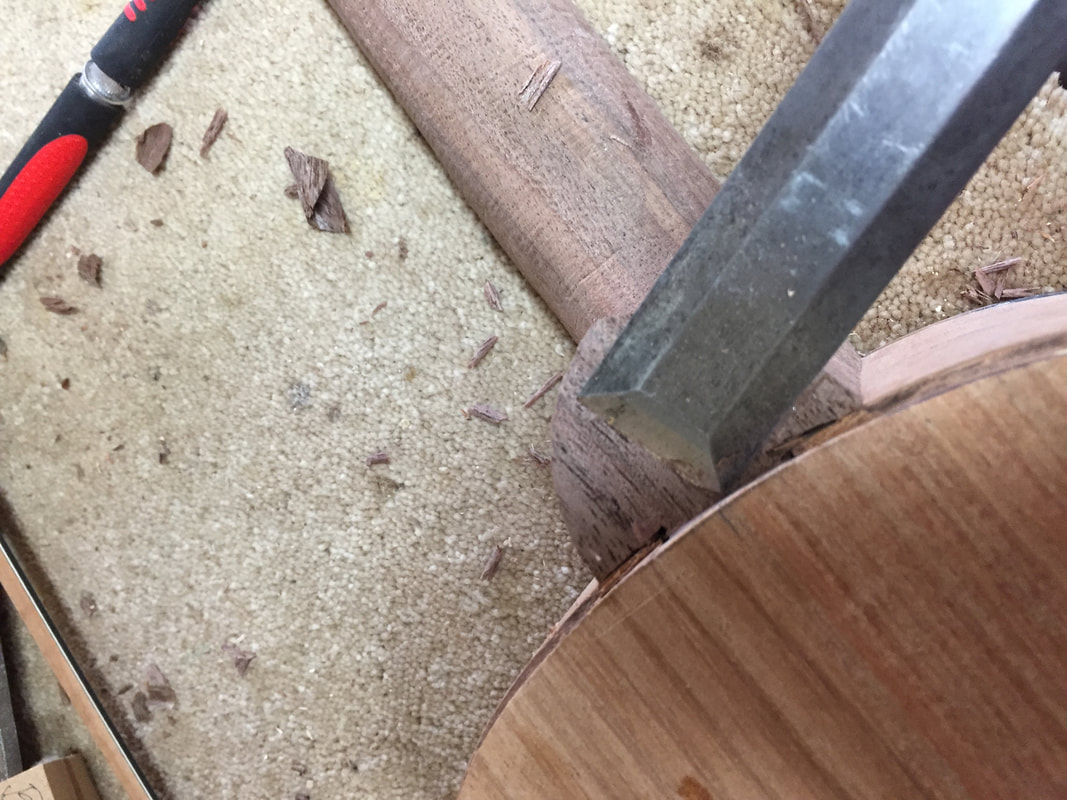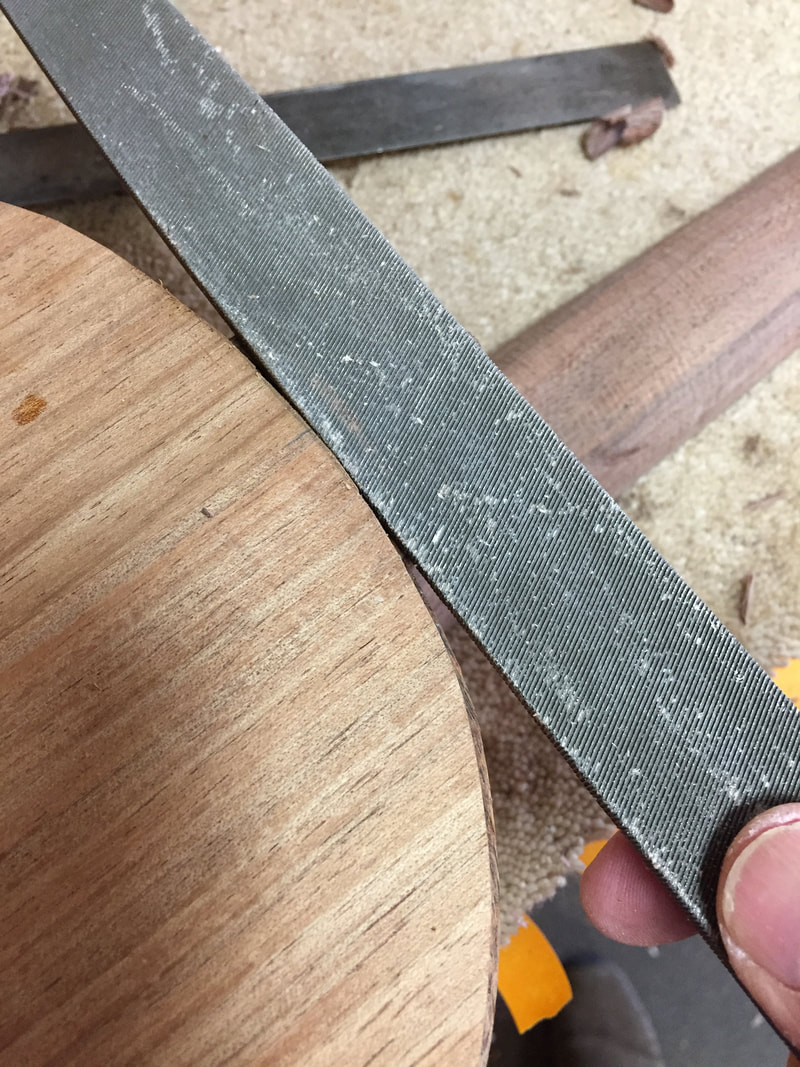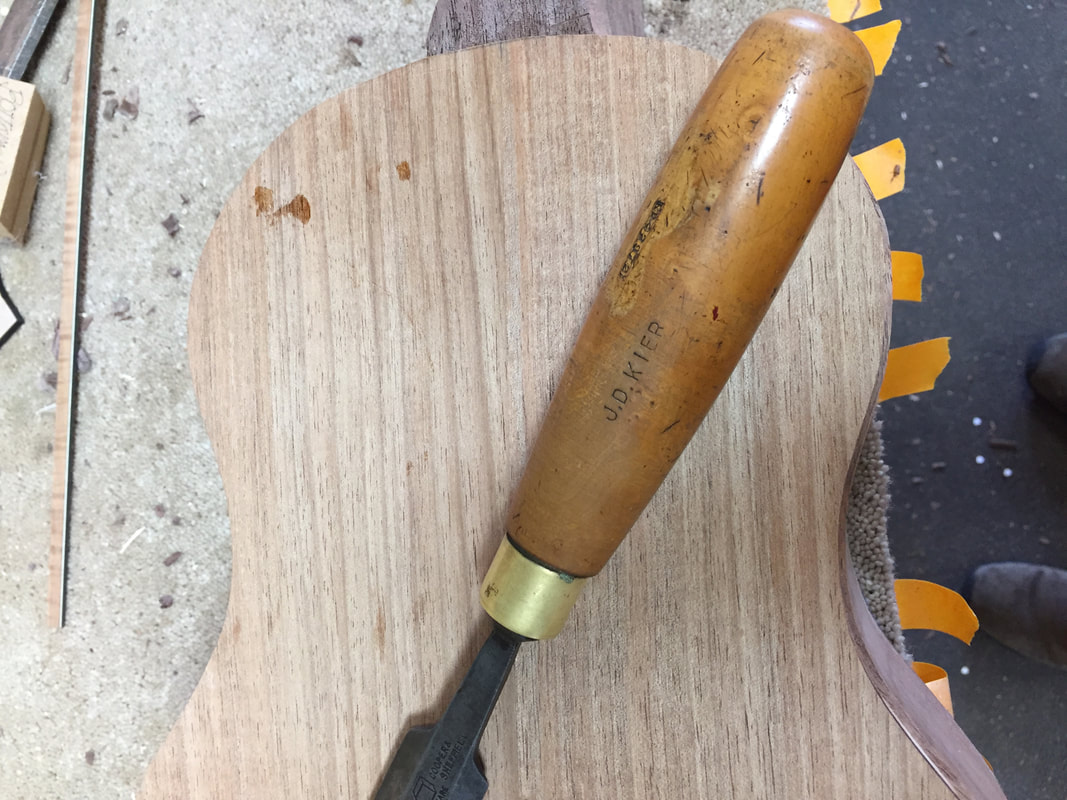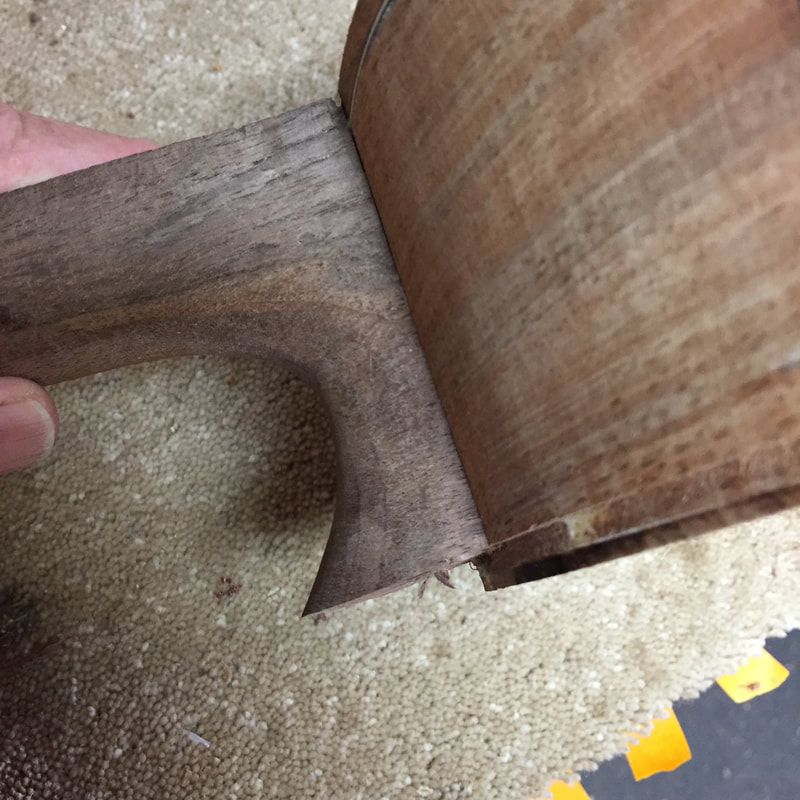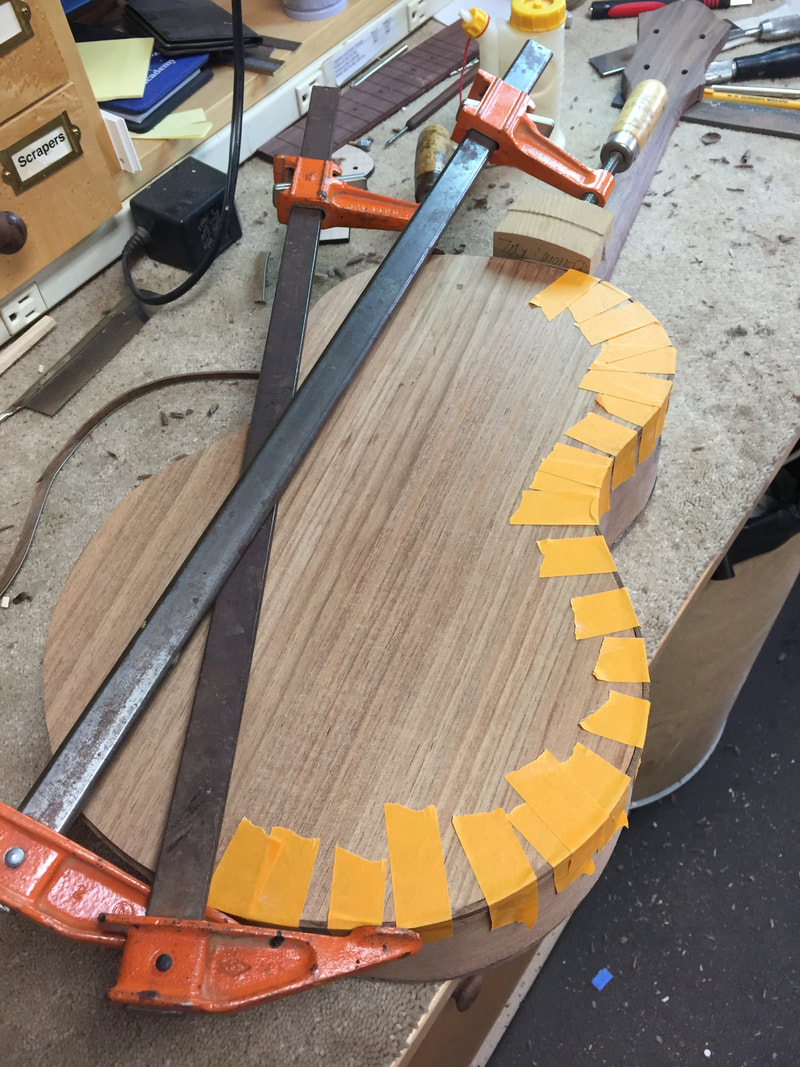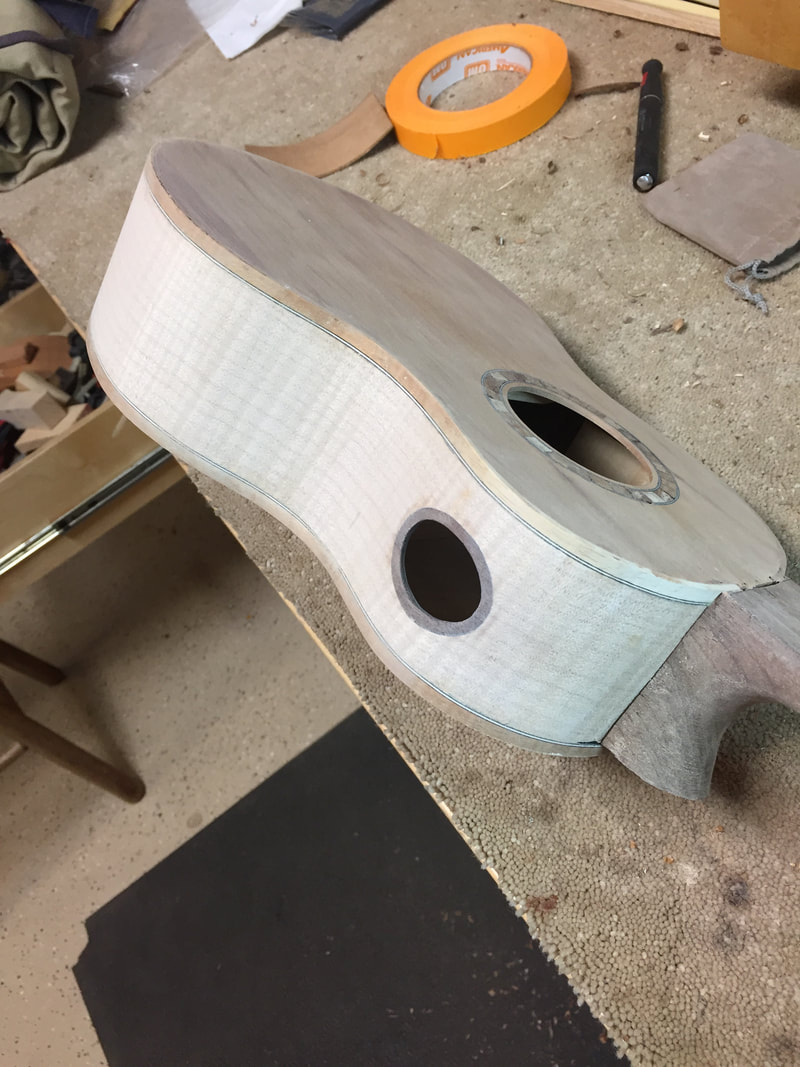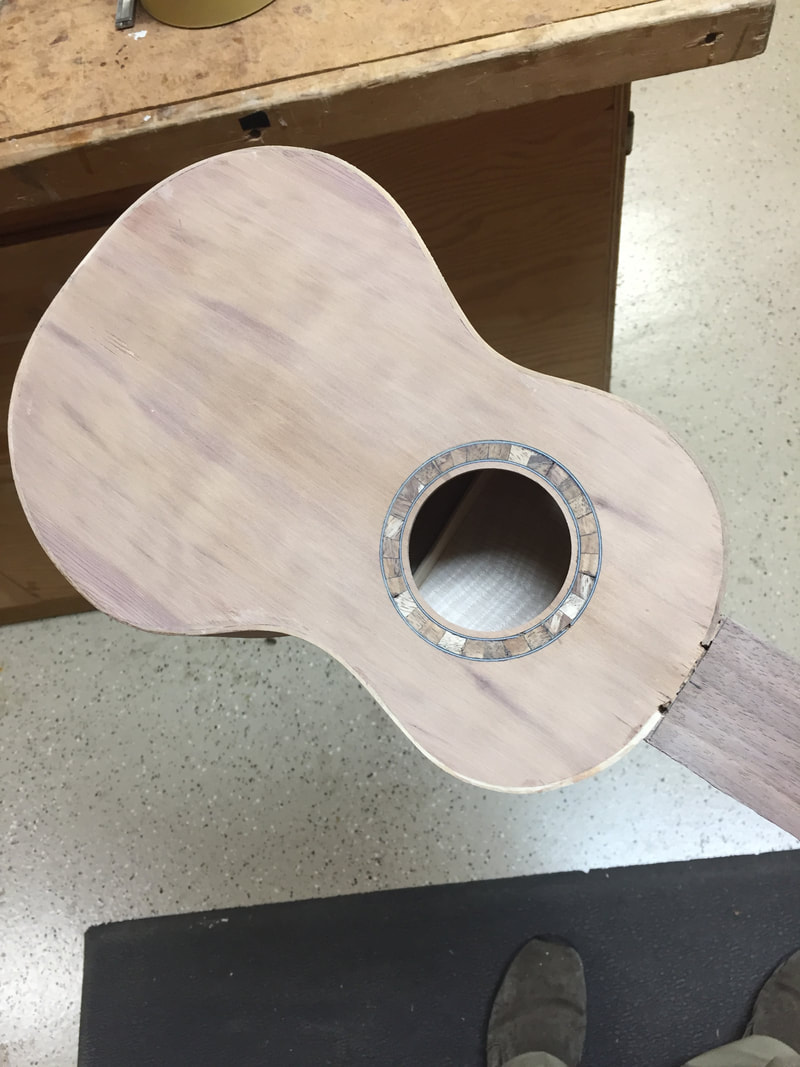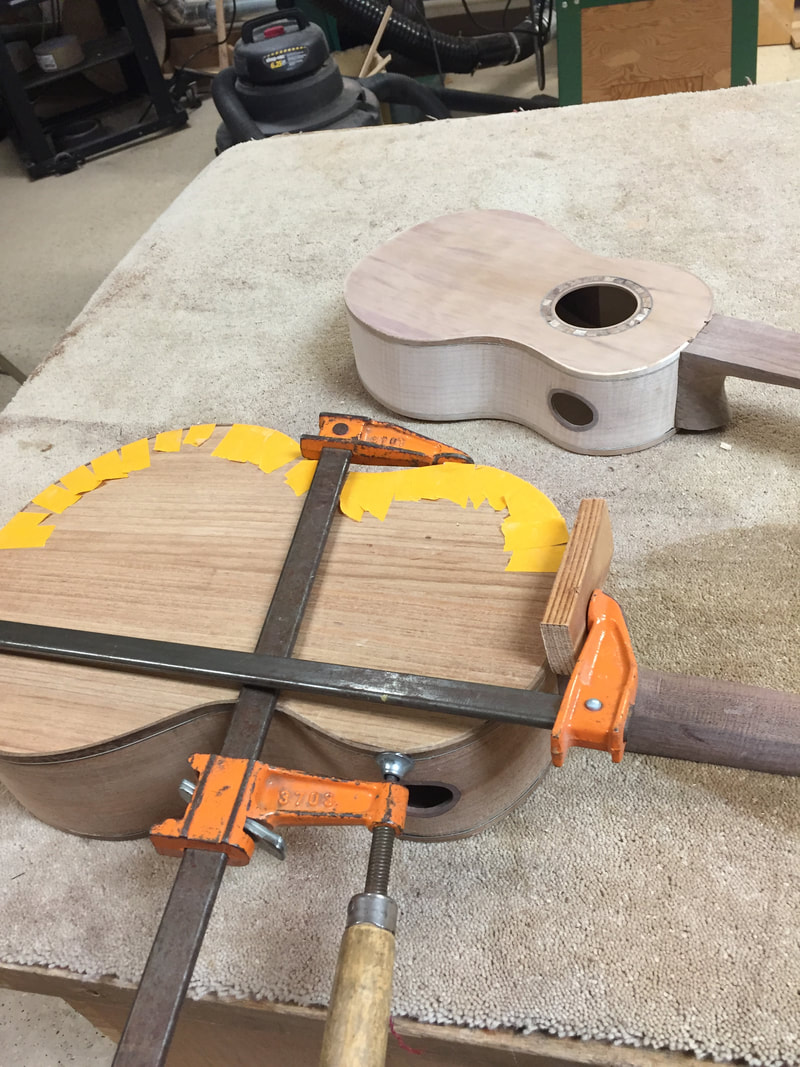Now that the grooves for the bindings are routed, you must make room for them at the heel. I cut away the heel down to the depth of the binding cut as I will be fitting in a heel cap later. Invaluable in cutting away the heel is this fine old flat chisel that I bought in England in a second hand store 25 years ago. Sheffield steel, sharp as a razor and beautiful to behold. One of my very favorite tools.
Once the heel is carved down and flat, I finish it off with this big flat bastard file. Anyone know why they are called "bastards" I don't.
The old chisel has, proudly stamped several places on its hardwood handle," J.D. Kier".I often think about him as I use his tool and know he must have revered it just as I do. I like to think the old craftsman, were he still alive, would be pleased to know his chisel is still working its wonders.
Now we are ready to fit the binding. It will meet at the center of the heel in a tight overlapping joint. Here you can see what I cut away to make room for it.
Once the binding has been trimmed to the right length and dry fit several times, I brush glue into the groove and begin the installation. With lots of thumb pressure, the binding is pressed into its groove and held there by this special tape. The tape usually needs a little help holding the binding to the groove at its ends. These long clamps do the job admirably.
The Concert has its bindings completed and they came out well. The bindings are rather light curly Koa. They will darken up considerably when the finish is applied and provide a nice subtile contrast to the much lighter tiger stripe maple sides. I think this will be a pretty uke. Notice anything unusual about this uke. I made it for a lefty. The sound port is on the right side. But thinking that one day a righty might be playing it, I also put a side sound port on the left side. I kind of like the balanced look, and am confident that this uke will make plenty of sound as well as attract some attention from the lefties of the world. Prior to this creation there were not left handed ukes, just right handed ukes that had their strings reversed.
The soundboard on this Concert is rather rare. It is Juniperus Maritima, a sub-species of Rocky Mountain Juniper that grows only on the rocky shores of the Salish Sea. I sourced this wood on San Juan Island. The tree is extremely slow growing. Using a 10 power glass I count 91 growth rings to the inch. The grain is so tight I cannot see it with the naked eye. It smells like pencil cedar. Lovely looking and lovely sounding.
By tomorrow morning the tape will be off the Baritone and both ukes will have their bindings. It gets easier from here on.
